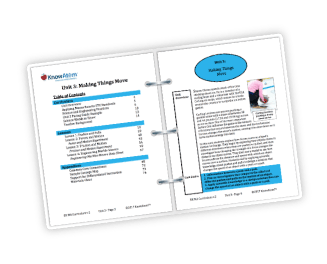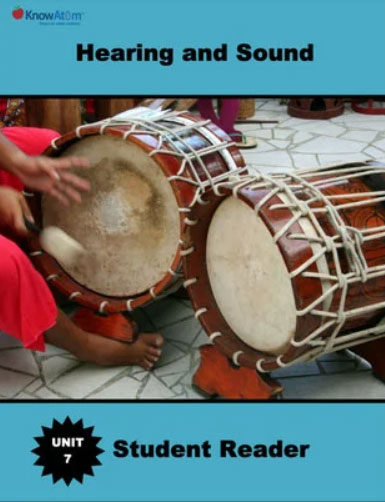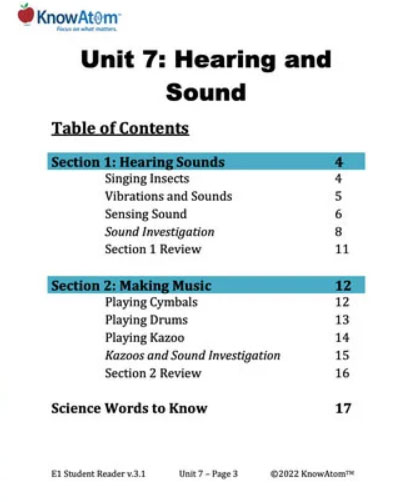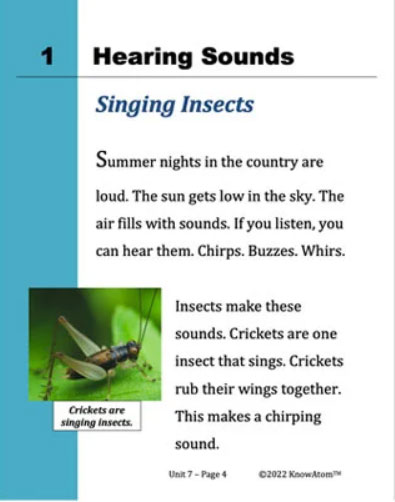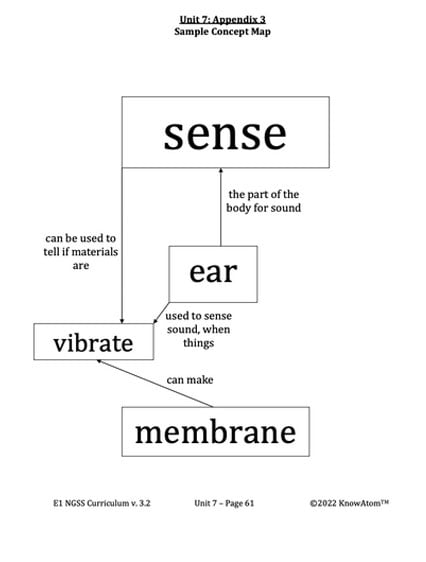Vibrations and Sounds
All sound comes from vibrating materials. To vibrate means to move back and forth quickly. A cricket’s wings vibrate when they rub together.
Your throat vibrates when you talk. Feel your throat when you hum. It vibrates. This is how you make sound.
Sensing Sound
Your ears hear vibrations. An ear is the part of the body that senses sound. A sense is how an animal gets information about the outside world. Hearing is one sense.
A cricket has ears on its legs. You have ears on your head. When a cricket chirps, it makes vibrations. These vibrations move the air. That moving air reaches your ears. You hear the sound of chirping.
Crickets make sounds to communicate. They share information with other crickets. Other crickets listen. They hear the chirps.


